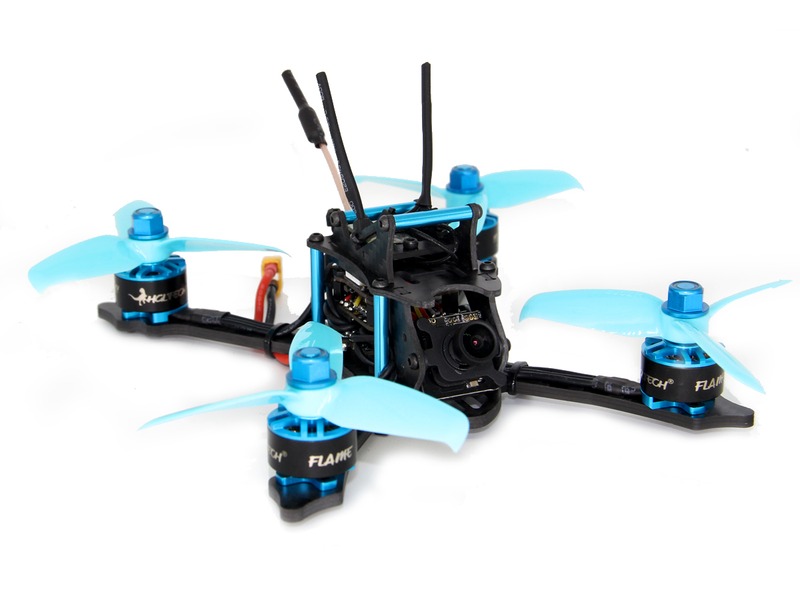How far do FPV drones go?

FPV drones, or First Person View drones, are becoming increasingly popular for aerial photography, racing, and recreational use. But how far do FPV drones actually go?
The answer to this question depends on a few factors, including the type of drone, the size of the drone, and the battery capacity. Generally speaking, most FPV drones can fly for up to 25 minutes on a single battery charge. This is because the majority of FPV drones are small, lightweight, and have relatively small batteries.
The range of an FPV drone is also affected by the type of radio transmission used. The most common type of radio transmission used for FPV drones is 2.4GHz, which has a range of up to 1.2 miles (2 km). However, some FPV drones use 5.8GHz radio transmission, which has a range of up to 3 miles (4.8 km).
The size of the drone also affects the range of the drone. Larger drones tend to have larger batteries, which can provide more power and therefore a longer flight time. Additionally, larger drones tend to have more powerful motors, which can help them reach higher speeds and cover more ground.
Finally, the terrain and weather conditions can also affect the range of an FPV drone. Windy conditions can reduce the range of a drone, as can flying over hilly terrain. Additionally, flying in cold temperatures can reduce the battery life of a drone, as the battery will not be able to hold a charge as well.
In conclusion, the range of an FPV drone depends on a variety of factors, including the type of drone, the size of the drone, the battery capacity, the type of radio transmission used, and the terrain and weather conditions. Generally speaking, most FPV drones can fly for up to 25 minutes on a single battery charge, and can reach a range of up to 3 miles (4.8 km) with 5.8GHz radio transmission.
Comments / Question
2. Your drone must remain below 120meters (400ft) in altitude.
3. Your drone must remain at least 30meters (100ft) away from people and property not involved in the flight.
4. When flying at night, your drone must remain within 300meters (1000ft) of a visible flashing light.
5. You must not fly over groups of people or vulnerable locations (e.g. prisons, universities, stadiums, military bases, etc).
6. You must maintain a safe distance from other aircraft and airports.
7. You must follow all local laws, regulations, and ordinances.
8. You must not intentionally fly close to aircraft, buildings, or vehicles.
9. You must not use your drone to harass, search, or spy on people or animals.
10. You must not use your drone to transport contraband or illegal substances.
2. Increase the power output of your transmitter: Increasing the power output of your transmitter can help increase the range of your FPV drone.
3. Use a directional antenna: Using a directional antenna can help you focus the signal in the direction you need, which can help increase the range of your FPV drone.
4. Increase the height of your drone: Increasing the height of your drone can help increase the range of your FPV drone, as the signal will have a less obstructed path to the receiver.
5. Use a better receiver: Using a better receiver can help increase the range of your FPV drone.
2. Avoid flying near airports, restricted zones, and other areas where drones are not allowed.
3. Always check the weather before flying.
4. Fly at an appropriate altitude.
5. Avoid flying over people or animals.
6. Make sure your drone is in good condition and properly calibrated.
7. Keep your drone away from power lines and other obstacles.
8. Use a spotter to help you keep an eye on your drone.
9. Be aware of other aircraft in the area.
10. Follow all applicable laws and regulations.
2. Antenna: A higher-gain antenna will allow for better signal transmission and reception, leading to a longer range.
3. Transmitter Power: The higher the transmitter power, the further the signal will travel.
4. Line-of-Sight: The presence of obstructions such as trees, buildings, or other objects will limit the range of the drone.
5. Weather Conditions: Wind, rain, and snow can all affect the range of an FPV drone by interfering with the signal.
6. Interference: Electromagnetic interference from other radio signals can limit the range of the drone.

